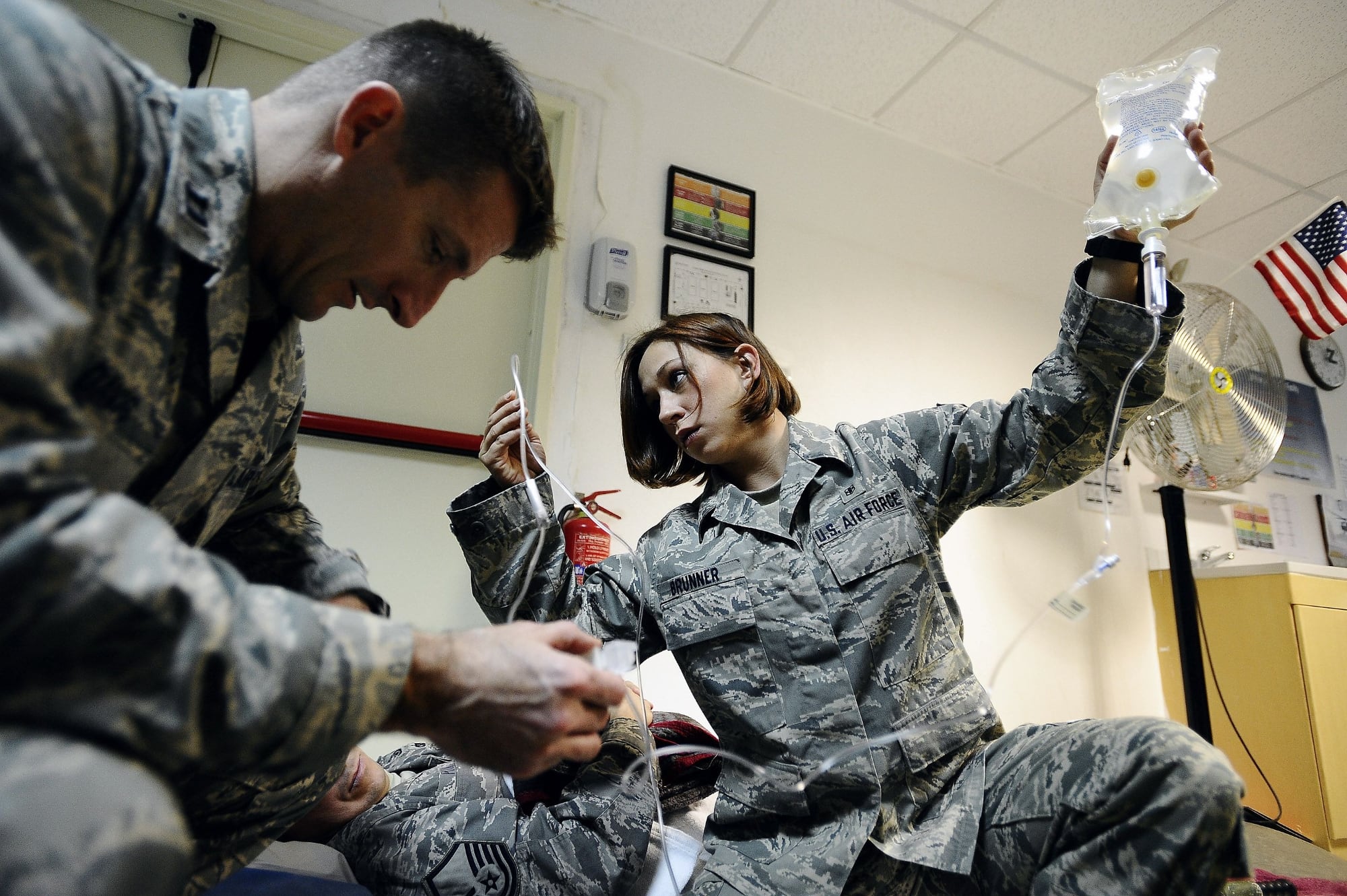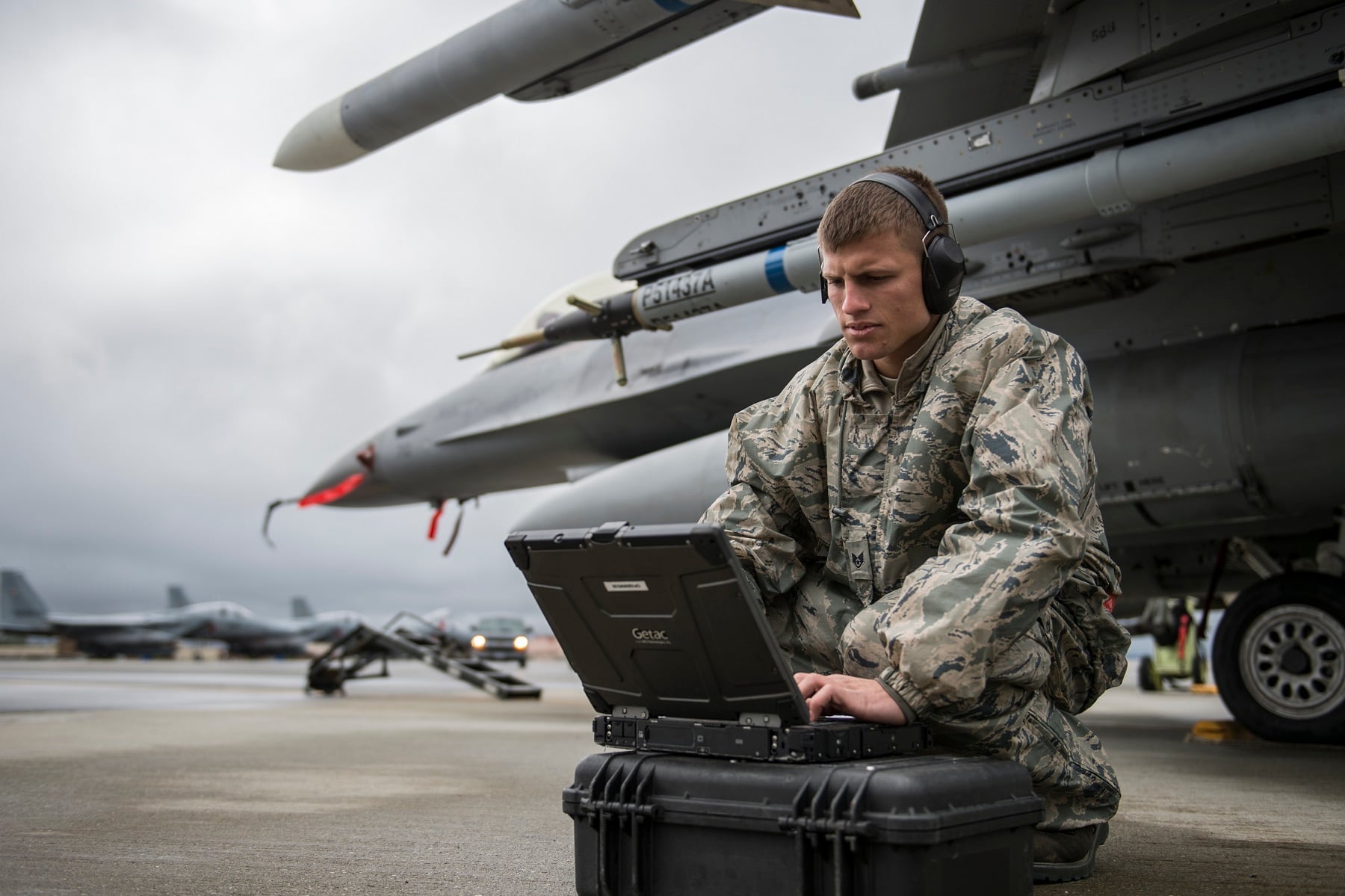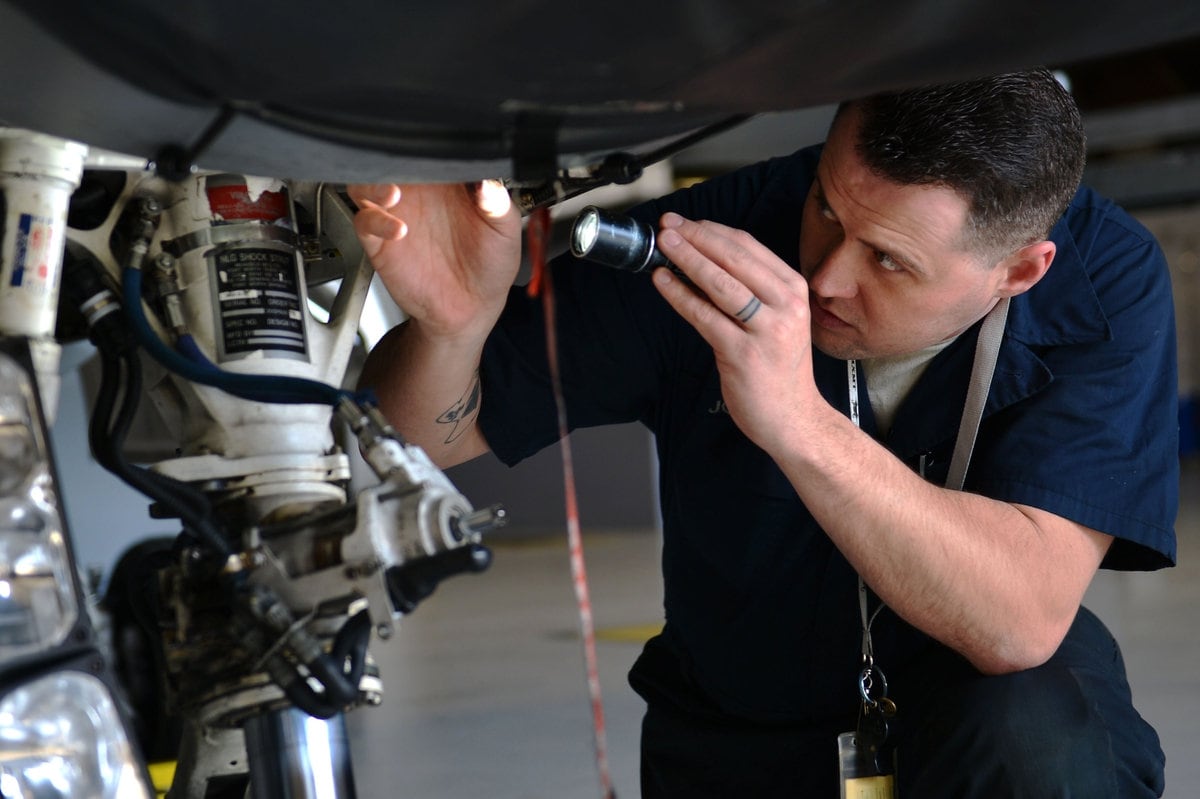The Air Force has dramatically increased the number of retraining opportunities for mid-career airmen to switch into key maintenance jobs as it seeks to rebuild those depleted career fields.
According to a list of retraining opportunities for career fields on the Air Force’s Shortfall Requirements List — a group of Air Force specialty codes with retraining quotas that have historically been hard to fill or had unique retraining challenges — the Air Force wants to retrain 15 technical sergeants and 50 master sergeants into the 2A378 career field, which represent the most experienced remotely-piloted aircraft maintainers.
The Air Force is also seeking to retrain 33 tech sergeants and 40 master sergeants into the 2A512 helicopter and tilt rotor aircraft maintenance career field, as well as three first-term airmen and one staff sergeant to specialize in the CV-22 Osprey. This AFSC represents the lowest experience level of 1, or helper.
That is a considerable hike from the lists of first-term and noncommissioned officer retraining opportunities released last summer, when only six staff sergeants and 15 first-term airmen were able to retrain into the entire 2A3 career field, and the 2A512D career field had one E-5 retraining slot and nine first-term airmen slots.
The list of retraining opportunities, which was current as of March 20, also included a handful of other maintenance slots: Two for 2A314C F-16 fighter aircraft integrated avionics, six for 2A317B F-35 tactical aircraft maintenance, two to maintain aircraft ground systems in the 2A612 field, four to maintain aircrew egress systems like ejection seats in the 2A613 field, and three to maintain aircraft fuel systems in the 2A614 field.
RELATED

The Air Force also needs two airmen to retrain into 2A713 aircraft structural maintenance; five for 2A715 low observable aircraft structural maintenance, which repairs stealth coatings on the F-22, B-2 and F-35; and others.
In all, there are 186 retraining opportunities in the maintenance-related 2A career fields, up 54 percent from 121 first-term and NCO retraining slots last summer.

The Air Force struggled for years to correct a serious shortfall in its maintenance ranks, and at one point was short about 4,000 maintainers. This shortfall was partly caused by the 2014 budget-driven drawdown.
After a significant hiring and training effort, the Air Force has now whittled that shortfall down to about 200. But the service is still lacking in its experienced 5- and 7-level ranks, and is trying to find ways to speed up the seasoning of its new maintainers so they can do more complicated work.
AFPC, which provided the list of retraining slots Wednesday, said the openings can change on a daily basis depending on Air Force needs and how many applicants are accepted.
In all, the list details 814 retraining slots in jobs where shortages exist, including:
- 97 first-term retraining slots for the 3P011 security forces career field, which is the largest in the Air Force.
- 13 retraining slots for 1C211 combat controllers, and six for 1T211 pararescue airmen.
- 72 retraining opportunities ― 55 of which are first-term airmen ― in the 1C311 command and control field.
- 11 first-term retraining slots and 76 staff sergeant slots for the 3F211 education and training field, as well as 26 3F311 manpower retraining slots.
AFPC spokesman Mike Dickerson said in the email that first-term airmen who are not in a short-staffed AFSC can apply for early retraining into the listed career fields at the halfway point of their initial enlistment.
AFPC also released a list of 27 jobs that are healthy enough, manning-wise, to allow 350 airmen to retrain out of. Those jobs include 4N011 aerospace medical service airmen, 2T311 vehicle maintainers, and 3E211 pavements and construction equipment.
The list of retraining opportunities can be found here.
Stephen Losey is the air warfare reporter for Defense News. He previously covered leadership and personnel issues at Air Force Times, and the Pentagon, special operations and air warfare at Military.com. He has traveled to the Middle East to cover U.S. Air Force operations.





